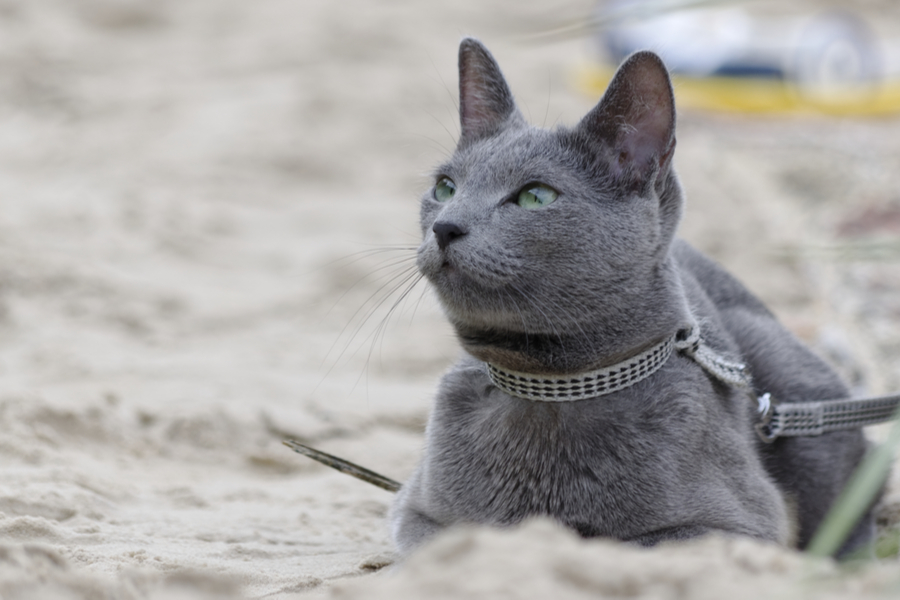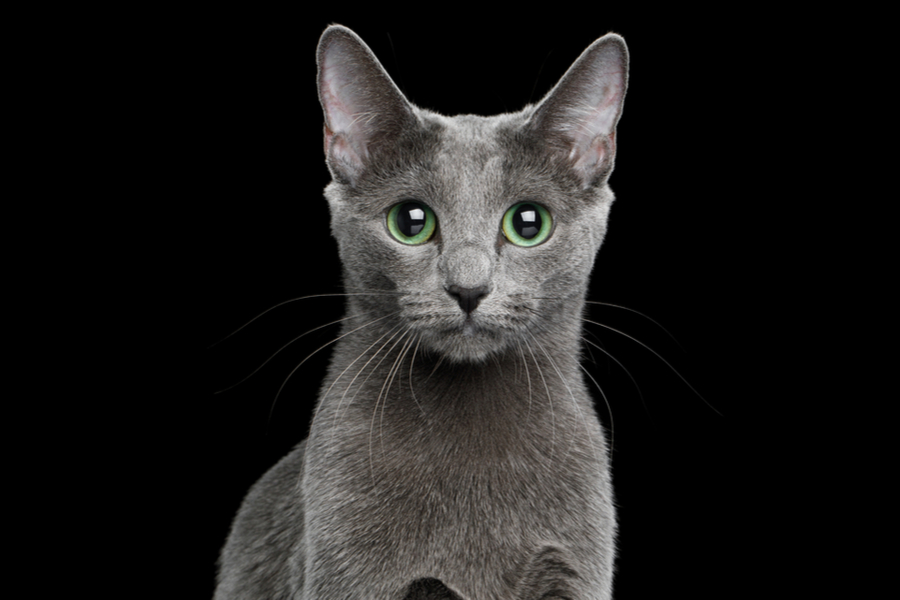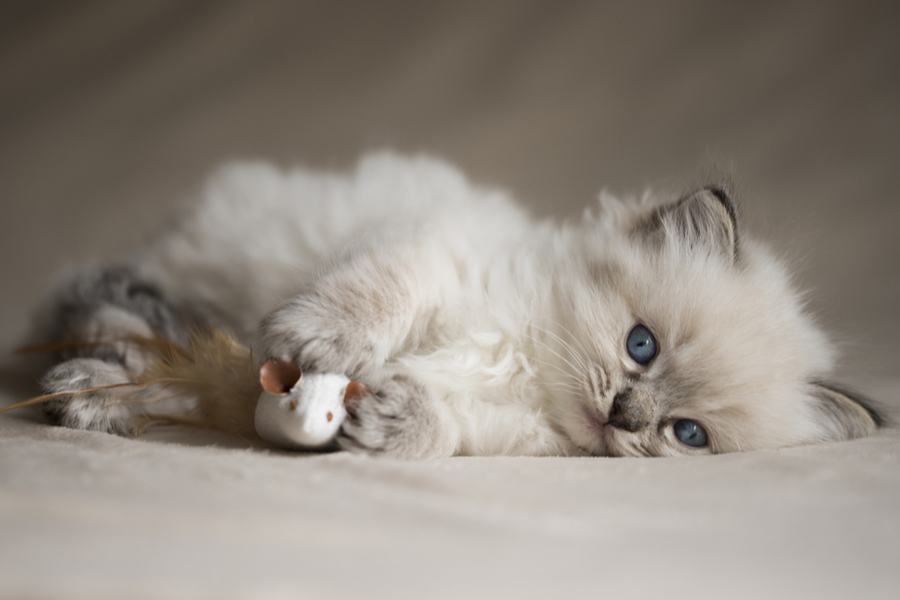Average sizes and life expectancy for this breed:
The Jack Russell Terrier, also known as the Parson Russel Terrier, is an energetic, smart, independent, and lively little dog breed with an insatiable taste for adventure. At first glance, they may seem like the ideal breed for novice pet parents and apartment dwellers. However, these are high-energy dogs that require plenty of training and stimulation to thrive. For this reason, you must ensure you have the time and patience to devote to a Jack Russell puppy. If you are willing to put in the effort and you can keep up with their boundless energy, you are in for a rollercoaster of fun! These dogs are loving and loyal but never lazy or dull.
Originally bred to hunt voles, foxes, and rodents, Jack Russell Terriers have small, solid bodies with short, wiry fur and small, bright eyes. These characteristics give them an enchanting appearance. Underneath this cute exterior, you will find an unbelievably sharp, astute little mind that absorbs information like a sponge. They also come armed with an unwavering prey drive and strong loyalty toward their owners.
If you are looking for a canine companion that can run agility or flyball courses, learn tricks, and play fetch until you drop, the Jack Russell Terrier may be the one for you. Jack Russell Terriers are small dogs with larger-than-life personalities. This dog breed loves to learn and enjoys spending fun time with family members.
See available puppies




Jack Russell Terriers first appeared in the early 1800s after Reverend John Russell spotted a small white female dog, named Trump, on the back of a milk wagon. Russell had developed a keen interest in hunting from a young age and believed that this canine would make a wonderful, swift hunting dog. He even earned the nickname of ‘the Sporting Parson’ because of his love for hunting.
Over the years, Russell bred Trump with black and tan terriers to form the beloved, lively Jack Russell Terrier we know today. He aimed to create an easily recognisable terrier with the stamina and confidence to tackle challenging terrains. He also wanted a dog that would eagerly ‘go to ground’ after their quarry without killing their prey, and he succeeded! His new breed, which was substantially larger than the Jack Russells of today, was an avid hunter who was not afraid to enter a fox den and stand against its inhabitants. His specific desired characteristics were as follows:
White coat colour – to prevent them from being confused with foxes when out in the field
Resistance – to be able to follow hunting hounds across rough terrain
Small size – to be able to enter burrows
Hard, thick fur – to prevent them from getting injured in thick undergrowth
A brave hunter spirit
After Reverend Russell’s passing, a group of fans continued his work, with a focus on breeding smaller terriers that were under 6.5 kg.
Although the breed is believed to be English in origin, there is some evidence to suggest that they were first developed in Australia and imported to England in the 19th century. However, the English, particularly John Russell, is generally accredited with the establishment of the Jack Russell Terrier of today. The first breed standard was created by Arthur Blake Heinemann and the Devon and Somerset Badger Club was founded in 1894. The latter later became the Parson Jack Russell Terrier Club in the 20th century.
After World War II the number of Jack Russells used for hunting declined as the sport became less popular. Over the years, these remaining dogs were bred with smaller domestic canines such as Welsh Corgis and Chihuahuas to create a dog more suited to family homes. This new version of the Jack Russell breed was officially recognied by the Kennel Club in 2016.


Often described as “small and perfectly put together”, Jack Russell Terriers are well-proportioned and well-balanced. Their flat skulls are moderately broad and taper towards the muzzle. These dogs have well-defined stops with well-muscled cheeks. They have black noses, and their tight lips are black in colour.
Their almond-shaped eyes are fairly small and dark in colour with a keen and intelligent expression. These dogs can either have dropped or button ears that are held close to the head. Their strong jaws have a perfect scissor bite.
Jack Russell Terriers have well-laid back and pronounced forechests. Their powerful front legs show a substantial amount of boning but are never overly muscled. Their bodies are powerful, compact, and robust with level backs that dip slightly at the loins.
Their chests are rather deep and wide, with oval-shaped ribcages. Jack Russell Terriers also have muscular hindquarters and small, oval-shaped feet with somewhat arched toes and solid, firm pads. The Jack Russell’s tail is set high, thicker at the base, and carried upright when they are alert. However, the tail can drop when they are relaxed.
The coat of a Jack Russell Terrier can either be smooth or rough. However, both have a coarse topcoat and a slightly softer undercoat. The accepted colours of this breed are predominantly white with black and/or tan markings. These markings can range from light tan to rich chestnut.
The energetic and high-spirited Jack Russell Terrier carries a larger-than-life personality in a small, compact body. Affectionate, dedicated, and boundlessly amusing, they love life and everything it has to offer.
Given the chance, a Jack Russell Terrier will follow their instincts, jumping over fences and diving into bushes when they pick up an enticing scent. For this reason, they must be fully lead trained before being let loose in the countryside.
This dog breed is very intelligent; however, they get bored very easily. So, make sure you keep training sessions short and fun. They are also known to be very friendly with people, but they can be tentative and even snappy with other dogs if they are not introduced with care. Jack Russell Terriers are confident and a bit mischievous, so you need to keep an eye on them to prevent these dogs from getting into trouble!
Aside from being courageous and confident, these dogs are incredibly devoted to their human companions. However, they do tend to form the strongest bonds with one specific member of the family in particular – usually the one who feeds them and takes care of them daily. These dogs thrive in households where one person stays at home for most of the day because they crave human contact.
It’s worth noting that these energetic dogs are known to be big barkers. This is due to their origin as hunters but luckily, this trait can be lessened with training. It’s recommended that you show these intelligent dogs the right kind of calm leadership that they need to remain calm themselves. This will also help them to understand what is expected of them. Jack Russells live for human companionship so they are always eager to please.


Training a Jack Russell Terrier to become a refined canine companion is not the easiest of tasks but it can be done as long as you are willing to put in the effort. Calm, patient training with a strong sense of humour will work very well with these spirited dogs.
Jack Russells are highly trainable, but they do have a stubborn streak and are prone to boredom. So, make sure you keep them entertained with a variety of toys, puzzles, exercise, and fun training sessions. Without this structure, these dogs can become destructive because they will seek out their own form of entertainment.
Jack Russells are keen to learn new tricks and please their owners. You just need to exercise patience and remain consistent. If you get the training right, Jack Russell Terriers are an absolute joy to be around with their silly, energetic natures.
It’s essential to socialise your Jack Russell Terrier from an early age to get them used to people and children, as well as other animals. However, because of their high prey drives, you must be careful when taking them outdoors.
These dogs are not difficult to housetrain. In fact, they often pick up this form of training much quicker than most other breeds.
The Jack Russell Terrier’s coarse, close-lying coat is low maintenance on the grooming front. However, grooming requirements will vary slightly depending on the coat type which comes in three varieties; smooth, rough, and broken. The short, dense, smooth coat type can be kept in tip-top condition with an all-over rub using a soft brush or hound glove weekly. The rough and broken coat types will need a more thorough brush with a dog comb or slicker brush at least once a week.
In addition, you should regularly clean their ears with a vet-approved cleaner and a damp, warm cloth. You can also run a cotton swab around the canal edge, but it should never be pushed into the inner part of the ear. If the outer parts of the ears are dry, you can apply mineral or baby oil as needed.
Trim their nails as needed, which may need to be done more often if your dog doesn’t wear them down naturally. If left untrimmed, long nails can cause tearing and splitting, which can be very painful for your dog.
Brush their teeth at least two times a week to prevent the buildup of tartar and bacteria. To avoid tooth and gum disease and bad breath, daily brushing is the best option.
Finally, you should get into the routine of regularly examining the body for any signs of infection such as sores, rashes, or inflammation on the eyes, nose, ears, mouth, feet, and skin. Your Jack Russell Terrier’s eyes must be clear and without redness or discharge.


The majority of Jack Russell Terriers are content, healthy little dogs. However, like all dog breeds, there are health conditions that your Jack Russell Terrier may experience during their lifetime. For peace of mind, only purchase Jack Russell Terrier puppies from reputable, licensed breeders as they will be able to perform DNA tests to check for any underlying conditions.
Some of the health issues seen in Jack Russell Terriers are:
Jack Russell Terriers are affectionate, charming, and loyal canine companions that do great in households with older children. However, they are not ideal for homes with young kids because they are highly energetic. No matter what the age of your children are, it's always best to supervise any interaction between a dog and a child to prevent any injuries or mishaps.
Some Jack Russell Terriers can be aggressive toward other dogs, especially dogs of the same sex. They also have a strong prey drive, so they are likely to want to chase cats and other small animals if they get the chance. To avoid any issues, make sure you familiarise a Jack Russell with other dogs from an early age. These dogs are not best suited to homes with smaller pets.


We can connect you with Breeders that are specialized in this particular breed.
See available puppies

Need some advice?
Whether you're a first time pet owner, an experienced pet owner, a new or long-time breeder, or just curious about pets, we've got you covered!

January 17, 2024
What Is The Personality Of Russian Blue Cats?
Russian Blue cats are most known for their distinctive shimmery blue-silver coat and piercing green eyes. However, this breed’s calm and gentle temperament is what makes them shine the most in the feline world.

January 17, 2024
10 Facts About Russian Blue Cat Breed
Russian Blues are one of the most aesthetically stunning cat breeds, with a gorgeous plush silvery coat and vibrant green eyes. However, it’s not only their appearance that is beautiful; their nature is too.

January 17, 2024
How To Choose The Right Cat Breed for You
Cats can make the most fantastic animal companions; they are adorable, friendly, and loving. However, not all felines are created equal. There are many different breeds, of which each has its unique personality traits.
Need some help?
Contact us to speak to our friendly advisor, who will gladly help you find your dream pet!



We are registered in England and Wales under registration number 12568840,
and our registered office is at 58-60 Kensington Church Street, W8 4DB London, England.
© 2023 The Pedigree Paws